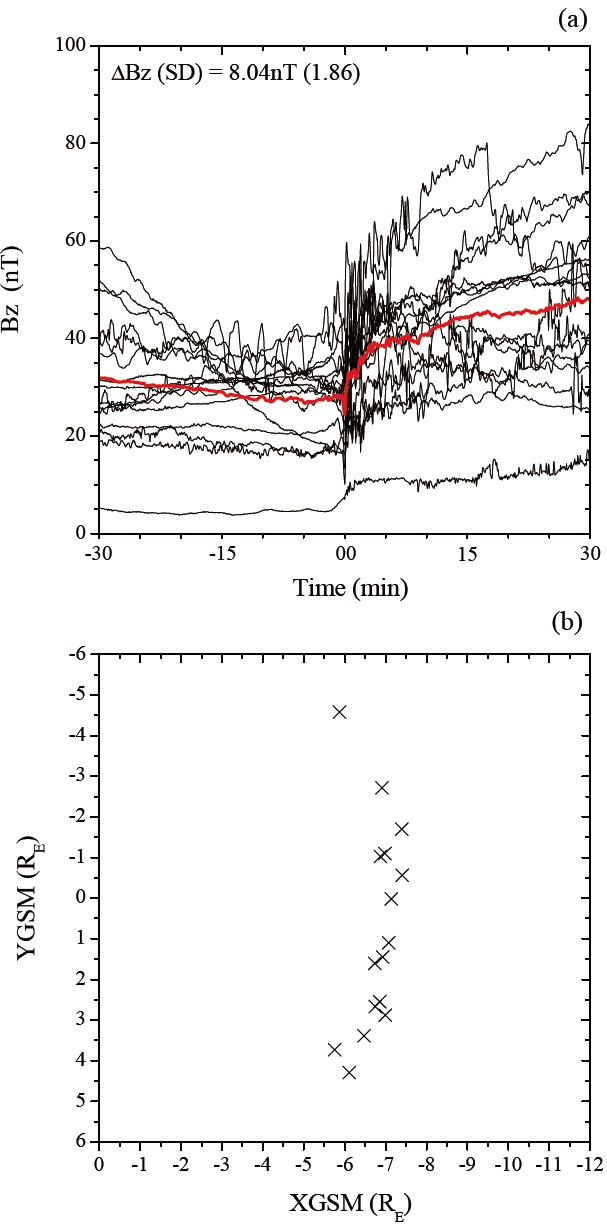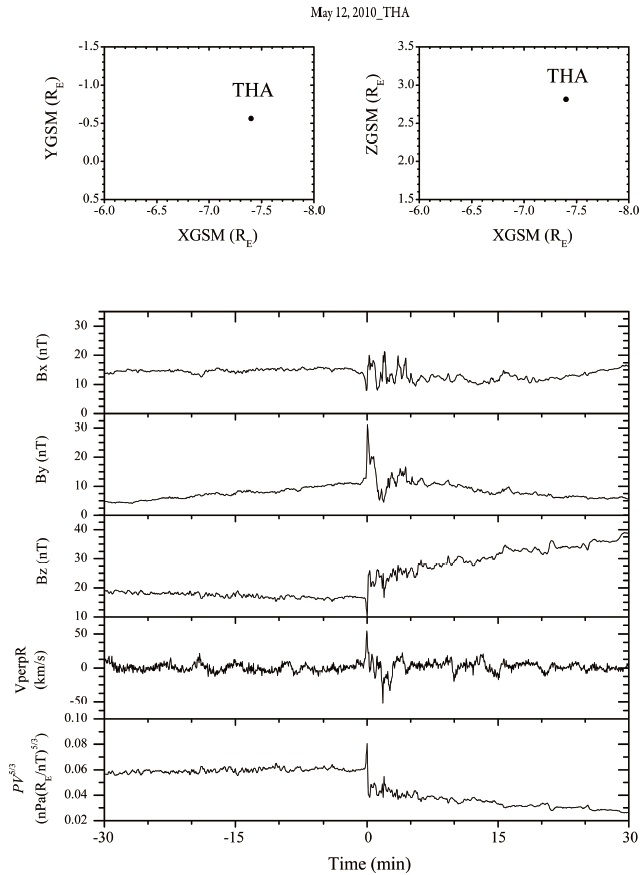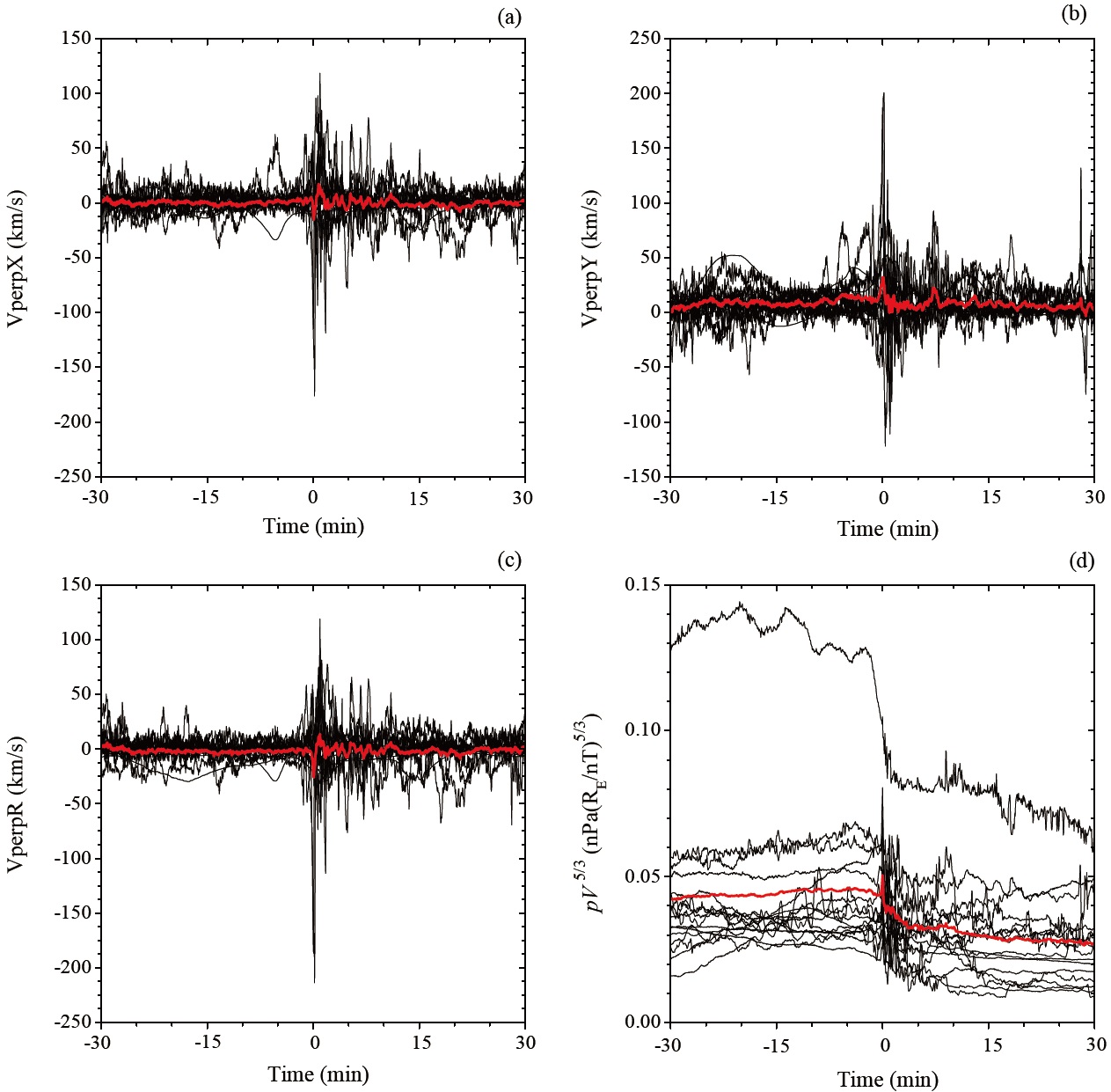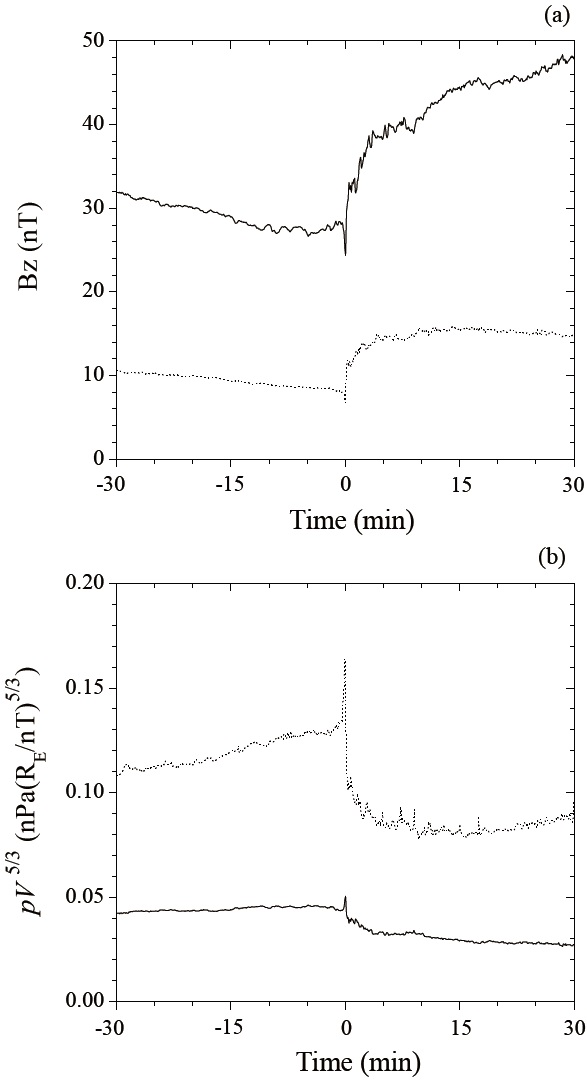



Magnetic dipolarization is a key element of the substorm phenomenon, and occurs often in near-geosynchronous region as well as in the farther out tail region (e.g., Lee et al. 2011, Kim et al. 2012). It is well known that magnetic dipolarization in the near-tail region is sometimes accompanied by fast plasma flows. For example, Lee et al. (2012) reported that ~50% of the dipolarization in the near-tail region is accompanied by plasma flows of a significant magnitude (> 100 km/s). However, the precise relationship between dipolarization and plasma flows remains unresolved (e.g., Kim et al. 2010, 2012, Lee et al. 2012, McPherron et al. 2011, Ohtani et al. 2002, 2006, 2009). In particular, how deep the earthward flows can penetrate remains a subject of intense research (e.g., Kim et al. 2012, Dubyagin et al. 2011, Ohtani et al. 2006).
Currently, there are two different scenarios proposed to explain the occurrence of dipolarization close to the Earth, often very close to geosynchronous altitude. In the first scenario, the high-speed earthward flows originating from a farther tail region are stopped at a transition boundary between the dipolar field and the more tail-like field (Shiokawa et al. 1997). This results in a magnetic flux pileup at the transition region and is supposed to cause near- Earth dipolarization there. In the second scenario, magnetic dipolarization is attributed to some kind of local instability (e.g., Lui 2004). Various instabilities, such as currentdriven instabilities and ballooning instabilities, have been proposed (e.g., Lui 2004, Park et al. 2010). The question of which scenario is the right one remains a subject of active debate in the community, and we do not attempt to resolve this in the present work. Rather, we aim to understand the basic properties of magnetic dipolarization, associated plasma flows, and bubbles (described below) very near geosynchronous altitude.
Some researchers interpret plasma flows in the plasma sheet in terms of the entropy parameter,
The main purpose of this paper is to understand the plasma flows and associated bubble properties around the time of the magnetic dipolarization in the near-geosynchronous region, r < ~7 RE. We examined a total of 16 dipolarization events that occurred in 2007 to 2010, using the magnetic field and plasma/ particle observations by THEMIS spacecraft when they were situated in the near-geosynchronous region. We attempted to compare the near-geosynchronous events with the previously reported events in the near-tail region. We present the identified magnetic dipolarization events in Section 2, the accompanied plasma flows and bubble parameters in Section 3, and conclusions in Section 4.
2. IDENTIFICATION OF DIPOLARIZATION EVENTS
To identify and examine dipolarization events in the near-geosynchronous region, we used the magnetic field data from Fluxgate Magnetometers, the plasma data from Electrostatic Analyzers and the energetic particle data from Solid State Telescope onboard the THEMIS satellites (Angelopoulos et al. 2008). To identify dipolarization events
[Table 1.] List of the 16 dipolarization events examined in the present paper.
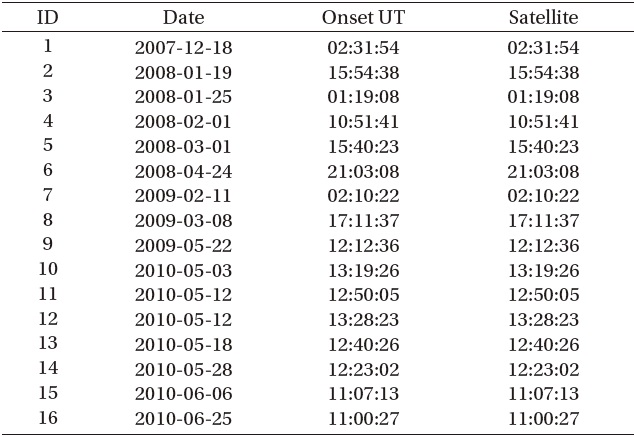
List of the 16 dipolarization events examined in the present paper.
in space close to geosynchronous altitude, we selected dipolarization events observed in the equatorial region of
To examine the plasma bubble properties associated with the identified magnetic dipolarization events above, we used the entropy parameter,
where the units for V are RE/nT, the magnetic field is in nT, distances are in RE, the equatorial pressure
and
where
and G = 0.0107.
Fig. 2 shows an example event obtained from the THEMIS A observations on 12 May 2010. The magnetic field data, radial component of the perpendicular flow and
shown for 1 hr interval around the time of the dipolarization onset, which is set to Time = 0, in the bottom panels. The magnetic
3. PLASMA FLOWS AND BUBBLE PROPERTIES
Here, we attempt to examine plasma flows and bubble properties based on the entropy parameter,
signs for the identification of the tailward flows are opposite. The duskward /dawnward directed flows are based on the sign of VperpY, i.e., duskward for VperpY > 0 and dawnward for VperpY < 0. We find that flow peaks occurred for some of the events near the onset times. However, the flow peaks for such events are < ~200 km/s in any direction. When averaged over all 16 events, radially earthward and tailward flow peaks are ~13.8 km/s and ~25.9 km/s within 3 min after the onset, respectively. At other times, the flow speed is mostly within 50 km/s for all of the events.
Lee et al. (2012) studied the plasma flows’ characteristics associated with dipolarization in the near-tail of r ~ 7 - 12 RE. They report that the peak earthward flow is rarely above 350 km/s, and the peak tailward flow is mostly less than 250 km/s in the near-tail region. In addition, they found that the relative occurrence rate of fast plasma flow overall decreases earthward. In line with this previous report by Lee et al. (2012), we confirm in Fig. 3 that plasma flow speed drops significantly in the near-geosynchronous region.
In Fig. 3d, one can see that the entropy parameter,
Kim et al. (2012) studied how deep a “tail bubble” can penetrate earthward by checking geosynchronous disturbance in response to tail bubbles identified at r ~ 7 - 12 RE. They found a statistical trend that geosynchronous disturbance is more likely to occur when associated with an earthward moving tail bubble with a more-depleted
The comparison is demonstrated in Fig. 4, which shows the average magnetic field
Fig. 4b shows that the average
In this paper we have reported some properties of the plasma flows and
around the dipolarization onset of some limited events. This is in line with the prediction by Lee et al. (2012) that the occurrence rate of fast flow events largely decreases earthward. (ii) The associated bubble parameter,
Our findings do not answer the question of whether the near-geosynchronous dipolarization is triggered by an internal instability or by the arrival of earthward penetrating tail bubbles. However, our findings do imply that, in any case, the near-geosynchronous substorm dipolarization is subject to only a weak bubble with a weak flow speed. They would propagate only by a small distance before stopping at an equilibrium position slightly inside geosynchronous altitude, or drifting around the Earth. We emphasize that this result is not because the dipolarization events used here are of weak intensity. In fact, the dipolarization events used here are of major intensity at near-geosynchronous orbit, but they create or are associated only with a weak plasma bubble. This is a new feature that has not been noticed before, and demands further investigation.

